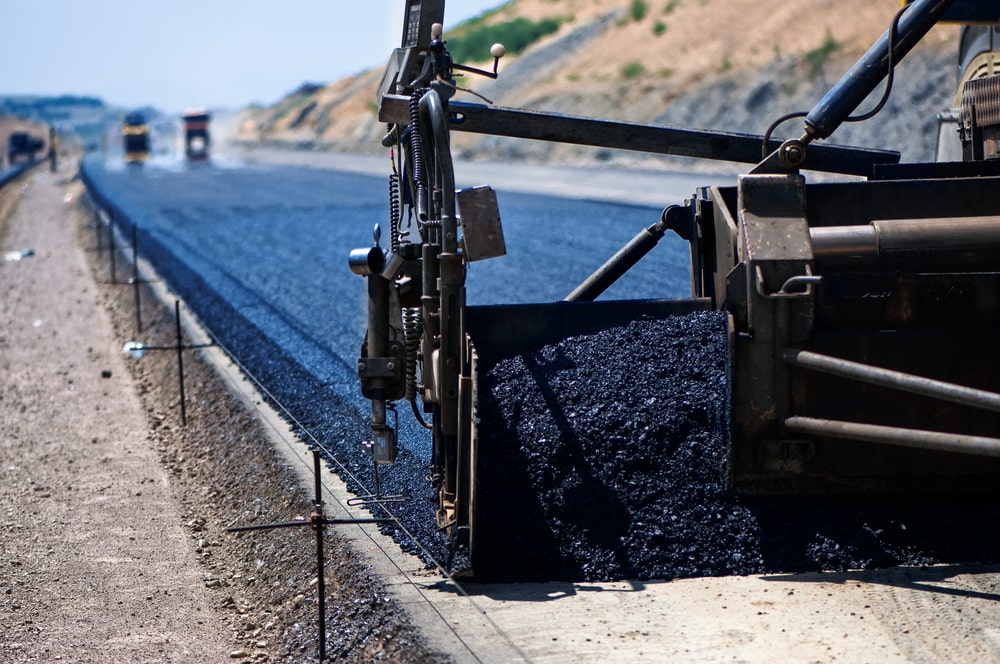Little Known Facts About A1 Professional Asphalt & Sealing Llc.
Little Known Facts About A1 Professional Asphalt & Sealing Llc.
Blog Article
Unknown Facts About A1 Professional Asphalt & Sealing Llc
Table of ContentsThe Only Guide to A1 Professional Asphalt & Sealing LlcA Biased View of A1 Professional Asphalt & Sealing LlcNot known Details About A1 Professional Asphalt & Sealing Llc A1 Professional Asphalt & Sealing Llc for BeginnersThe smart Trick of A1 Professional Asphalt & Sealing Llc That Nobody is Discussing

The oil in a car engine is not simply oil. It includes a range of ingredients to improve the automobile's performance. These include polymers, thickness modifiers, heat stabilizers, additional lubricating substances, and wear ingredients. The REOB consists of all the ingredients that remained in the waste oil as well as the wear metals from the engine (mainly iron and copper).
Nonetheless, by making several blends using various REOB samples and different asphalt binders, the variants mostly can be balanced out. A number of States gave samples of recognized REOB composition to TFHRC researchers, that assessed the samples to compare the portion of included (understood) REOB to the discovered (checked) amount. The evaluations showed a comparable portion of added and located REOB.
The smart Trick of A1 Professional Asphalt & Sealing Llc That Nobody is Discussing
They got a frustrating response. The TFHRC researchers assessed 1,532 samples from 40 States, one Canadian province, and 2 Federal Lands Highway divisions. They evaluated each sample twiceamounting to greater than 3,000 analyses. None of those States recognized that the asphalt they were buying had REOB. One State insisted its samples had no REOB.
Of the 1,532 examples examined, 12 percent had REOB, and some contained considerably high degrees of it at 1020 percent. The highest degree was 34 percent in a sample from Texas, which TxDOT had actually utilized in a patching substance. This screening likewise revealed the presence of phosphoric acid in 11 percent of the samples, and 2 percent consisted of ground tire rubber.
Two years earlier at TRB's annual conference, the Federal researchers held an REOB workshop and provided the searchings for of their laboratory assessments to a standing room-only group. Some agencies do not particularly prohibit REOB, they do impose physical examinations that preclude its useeffectively a restriction. Others do not ban it by specification, however have arrangements with asphalt providers to prevent using REOB
The Only Guide for A1 Professional Asphalt & Sealing Llc
A handful do enable REOB, some within specific limits. For instance, Ohio and Texas restriction levels to much less than 5 percent of the asphalt. To create a trustworthy examination approach that all States can use, the TFHRC scientists established a round-robin examination plan. The individuals are 11 State freeway firms (Illinois, Massachusetts, Minnesota, Mississippi, Montana, North Carolina, Oklahoma, South Carolina, Texas, Vermont, and Wyoming), 2 independent testing labs, the Ministry of Transport in Ontario, Queen's University in Ontario, and an Ontario paving service provider.
The participants are evaluating the examples separately using the guidelines offered by the TFHRC researchers. The output will certainly be a proposed AASHTO examination method that any type of State can adopt and use.
The pavement with REOB, which is located 0.6 mile (1 kilometer) from the pavement without REOB, has similar subgrade, website traffic thickness, and environment. The sector of Highway655 with 5 to 10 percent REOB revealed significant splitting. In this example, the visibility of REOB was the determined source of splitting at a reduced temperatures.
"In our experience in copyright, even little amounts of 23 percent can be a trouble." Similarly, an area of test sidewalk in Minnesota (MN1-4) found to consist of REOB also broke too soon. The pavement done well for the very first 3 to 4 years, however then started to fracture. This sidewalk is also based on low temperature levels.
The 20-Second Trick For A1 Professional Asphalt & Sealing Llc
The examinations were not substantial, but they showed that at levels of 6 percent or even more, the tensile strength of the asphalt dropped dramatically. At a level of 3.5 percent REOB, the variant in the physical test techniques was more than the impact of REOB. It was challenging for researchers to examine whether REOB was present. https://justpaste.it/g23qf.

One binder criterion thought about is the distinction in between the low temperature critical requirements temperature level for tightness (S) in the bending beam of light rheometer and the bending beam rheometer creep incline (m-value) noted as Tcritical. TC = TC (S) TC (m-value). Examination of this criterion is still continuous. Two independent study teams, one from AASHTO and the various other from the Asphalt Institute, ended that more research is needed on using REOB in asphalt.
Formerly, all asphalt testing determined design homes such as stiffness. These tests do not show what materials had actually been included to the asphalt. One example obtained during the TFHRC research had a very website here odd evaluation. The sample had the following examination results: Superpave PG 64-28 with a high temperature quality of 67.3 Tcritical on the flexing light beam rheometer was 6.7 degrees Celsius.

Rumored Buzz on A1 Professional Asphalt & Sealing Llc
These outcomes show there are weaknesses in the standardized design screening methods that may be manipulated. The manufacturer might have a financial advantage and the product passes all the standardized examinations, however the product may not be helpful to making sure long-term efficiency. To resolve this concern and the development of new asphalt ingredients and extenders, TFHRC is starting a study program to utilize handheld spectroscopic gadgets, x-ray fluorescence spectroscopy, and Fourier change infrared spectroscopy to enable analyses to be performed in the field rather than needing to take samples back to the lab.
Report this page